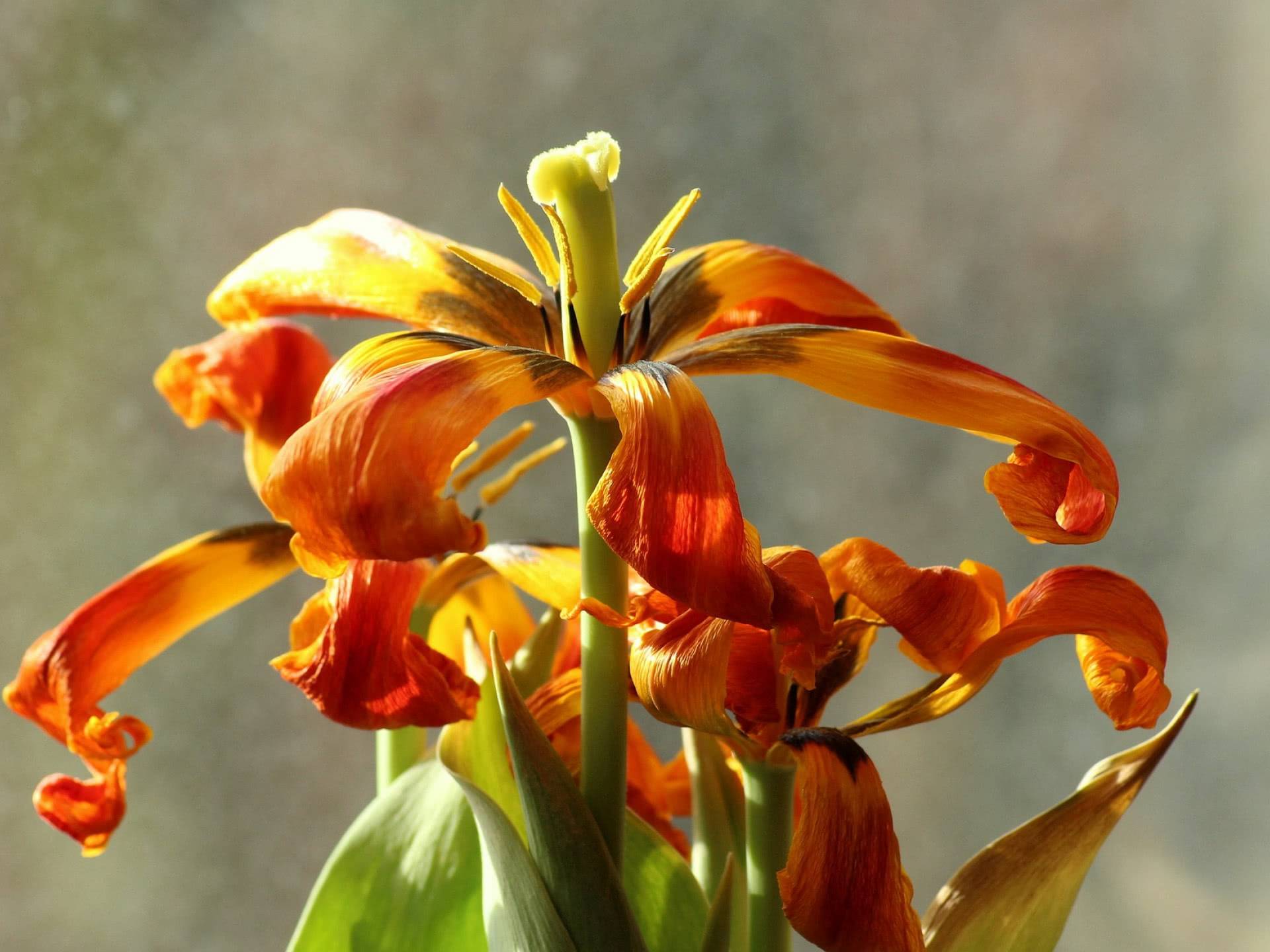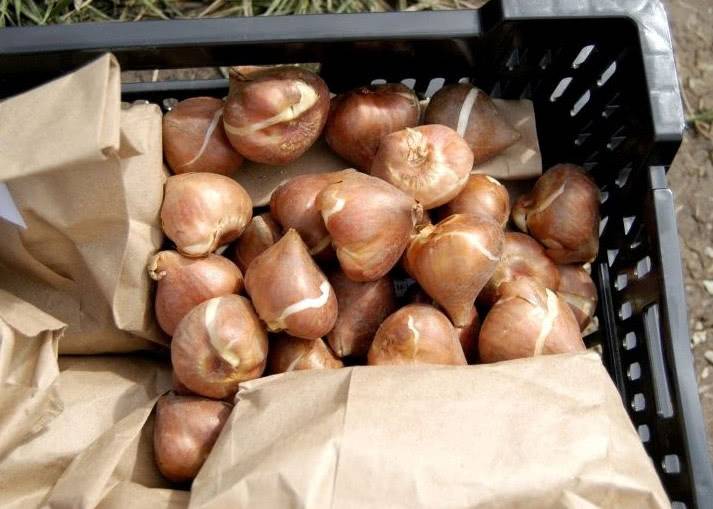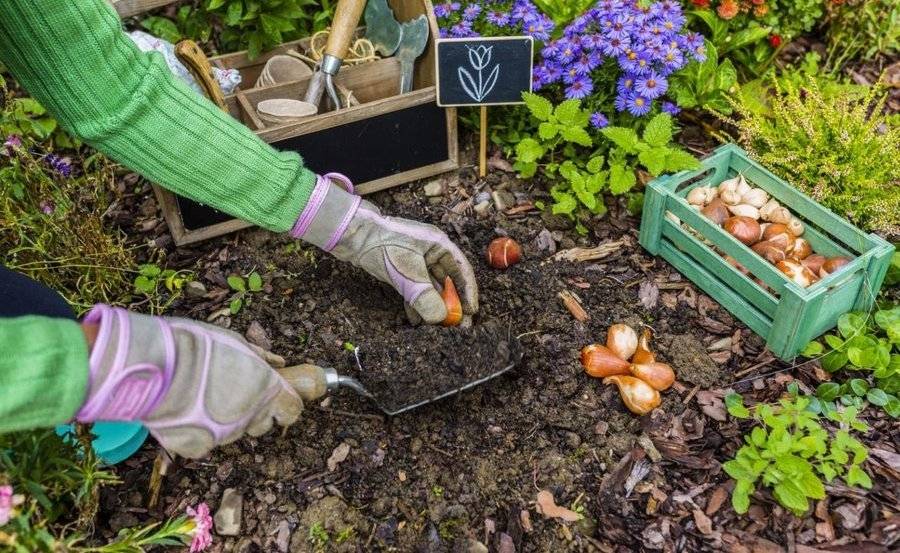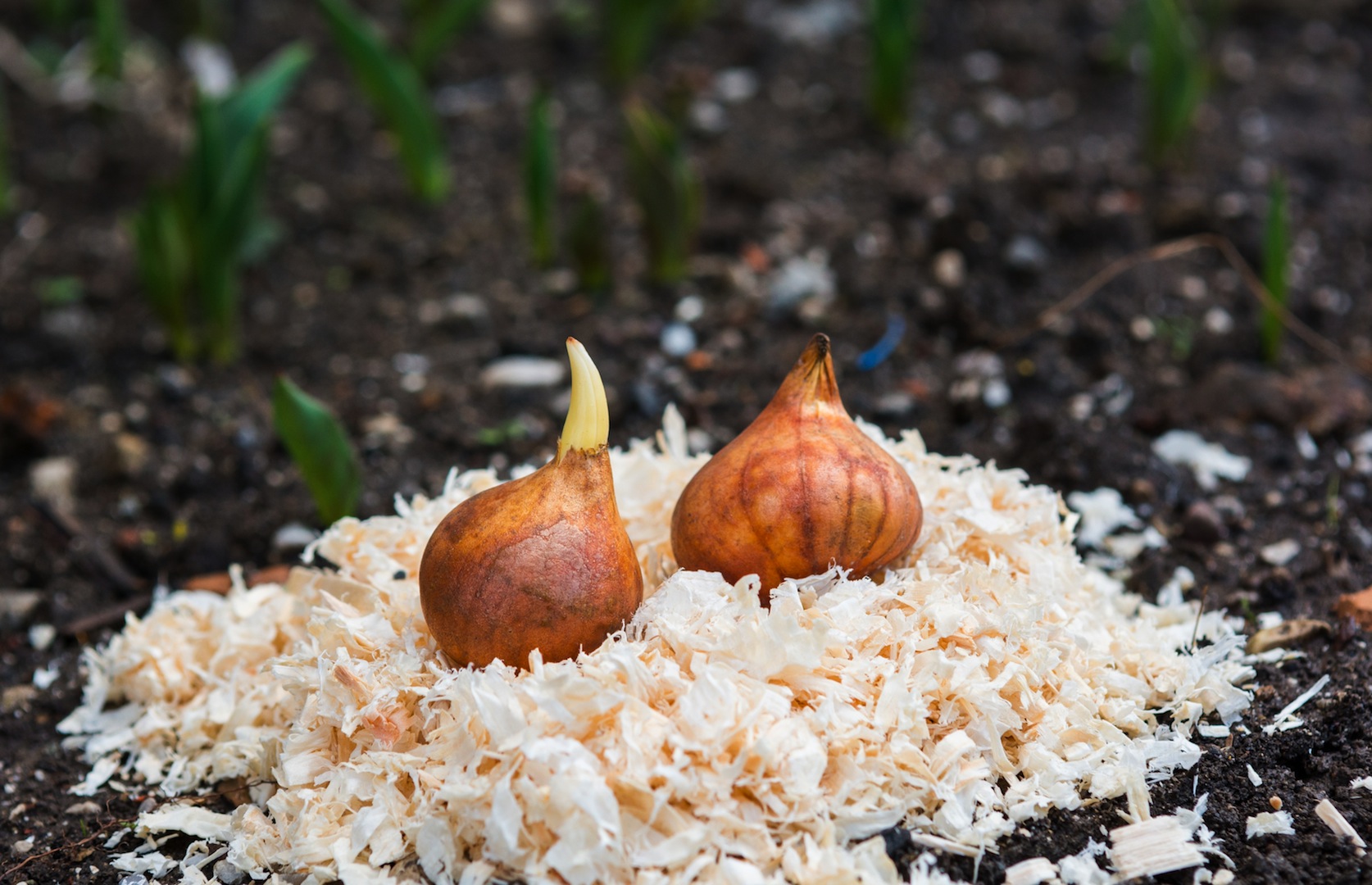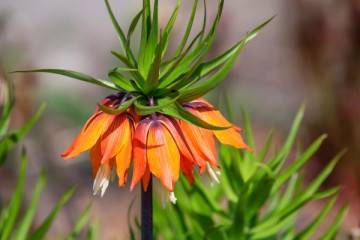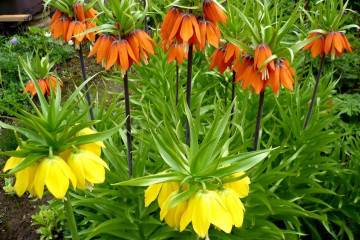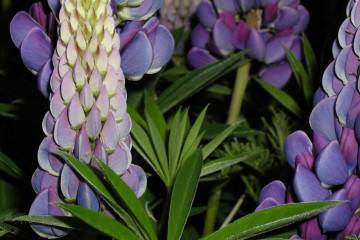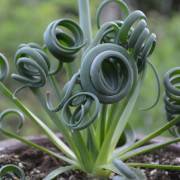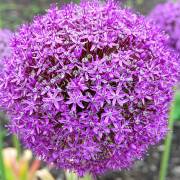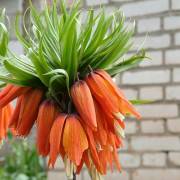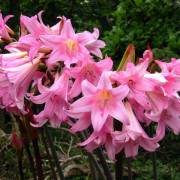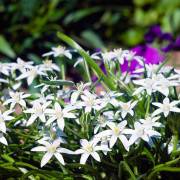When to replant tulips
Content:
Among gardeners, tulips have a great many fans. A vase with a bouquet of these flowers decorates apartments even in winter. Tulips are widely used in landscaping and for cutting and forcing. Taking into account the biological characteristics of these flowers, optimal methods of their cultivation have been developed. These include not only watering and feeding, but also the digging of the bulbs, followed by storage and transplantation.
When to replant tulips
Tulips, daffodils and other spring flowers need care not only during the growth and flowering period, but also after the inflorescence withers. When tulips and daffodils have faded, what should be done next according to agricultural technology? The following will be discussed in detail.
Removing inflorescences
The first thing to do is cut the flowers. Withered inflorescences, as in the case of cutting for a bouquet, are removed above the second leaf. The cut must be done with a sharp and clean instrument. Better if it is new. It must be sterilized so as not to spread the variegated leaf virus across the plantings.
After the inflorescences are removed, you should wait for the leaves to turn yellow and only then proceed with the transplant. Transplanting tulips after flowering should be done only in autumn, after maturing.
Extraction of bulbs and storage
As soon as the leaves of the plants begin to turn yellow and dry, you can start digging. As a rule, this is the beginning of summer, or rather June. It is better to do this in cloudy weather - the bulbs should not be in the sun. Better to start with early varieties, they fade first.
- Further, it is necessary to strictly observe the sequence of actions and requirements for the temperature regime.
- Immediately after digging, the bulbs should be placed under a canopy for 3-5 days to dry.
- Dried and peeled from plant residues, the bulbs are placed in boxes and left for 3-4 weeks at a temperature of 22-25 degrees in a dark and well-ventilated room.
- After this time and until planting, it should be stored at a temperature of 18-20 degrees.
Compliance with such a temperature regime during storage is very important, the flowering of plants for the next year depends on it. It is also important to provide adequate humidity and good ventilation.
If there is high humidity and insufficient ventilation of the room where the bulbs are stored, mold may appear on them.
Reproduction by children
You can get new copies of the desired variety by separating the children from the adult bulb. It is this method that is most often used by flower growers, since it allows you to get a plant that will be completely identical to the mother.
They start dividing after drying the bulbs. When they are peeled from the husk and sorted by size, the young bulbs are separated.They are stored along with the rest until they are planted in the ground.
You can also propagate tulips by seed, but this method is only applicable if you want to grow a unique or rare variety. From sowing seeds in the ground to the formation of a bulb, it usually takes 2-3 years. Plants grown in this way begin to bloom only after 5-6 years.
The method of propagating tulips by seeds requires not only experience and diligence, but also patience.
When to plant tulips outdoors in autumn
The best time to transplant tulips into the ground is the second half of September. By this time, the soil temperature drops to 10-12 degrees. But these terms may differ for different regions due to the peculiarities of the climate. When determining when to replant tulips after flowering, it is necessary to take into account the climatic features of the region.
The site for planting should be well-lit, leveled and drained. It also needs to be protected from strong winds. The soil must be prepared in advance - on poor lands, plants quickly become shallow and degenerate.
A frequent question among gardeners is "Why don't tulips bloom?" The problem usually lies in the lack of sun in the area where these flowers grow. Due to the lack of sunlight, the earth warms up poorly, as a result of which there is a delay in the development of the bulbs. During the spring period, they may have time to form leaves, but they may not reach the ripening of the buds.
Planting density depends on the size of the bulbs. Large ones are planted at a distance of 10-12 cm in a row, and smaller ones are denser. The planting depth of large bulbs should be three times their diameter; for small ones, this value should not be less than 8 cm.
Top dressing
Tulips need regular feeding. They are carried out in four stages, each of which involves the use of certain fertilizers.
- In the spring, as soon as the snow melts, the shelter is removed and they immediately begin to apply mineral fertilizers. For each square meter, you need 3-4 buckets of water with dissolved fertilizers. The approximate dose is 30-50 grams per square meter. Also rotted manure or compost can be added at this time.
- The second feeding is carried out during the period of bud formation. At this time, superphosphate or boric acid is suitable for feeding.
- During flowering, a third rate of fertilization is applied. Wood ash combined with chicken droppings is an excellent feeding option for this phase of plant development.
- The last feeding is carried out after the end of flowering. During this period, it is better not to use nitrogen-containing fertilizers. It is preferable to feed with substances containing potassium and phosphorus.
There are two important rules to consider when applying fertilizers.
- The first point concerns mineral fertilizers. When choosing them, you should pay attention to the composition, it should not contain chlorine. This element is contraindicated for tulips.
- The second rule concerns organic fertilizing. When using them, it is very important to respect the proportions when diluted in water. A high concentration of the solution can not only damage, but also destroy the plant.
Timely provision of the necessary minerals will allow the plants to fully develop and bloom annually. For tulips, fertilizing four times must be carried out, especially for the elite varieties of this flower.
Planting and care in the open field in the Urals
The difficult climate of this region limits flower lovers in the choice of the range of plants to grow. Tulips are not a particularly demanding crop and growing in such climatic conditions is quite feasible.Naturally, only if the rules of agricultural technology are observed.
The sequence of actions for caring for these flowers in the Urals practically does not differ from the general rules and norms for other regions. Particular attention should be paid only to determining the timing of the digging of the bulbs and the autumn planting in the ground.
Post-flowering care - when to cut flowers
After the inflorescence wilting, the flowers are cut off, leaving at least two leaves on the plant. The more leaves remain, the better the bulb will get stronger.
You shouldn't hesitate with this procedure. After the leaves have completely died off, the bulbs are almost impossible to detect. Left in the ground, they are likely to die.
How to seat and when
You can start digging for planting after the leaves have completely yellowed and died. Further steps for drying and storing the bulbs are the same as for other regions.
You can plant tulips when the soil is cooled to 10-12 degrees. In the climate of the Urals, it is better not to hesitate with landing. The best time will be late August - early September.
Site preparation should begin in the year preceding planting, in the fall. The soil is filled with a large amount of organic fertilizers, by the time of planting they must be overheated. During the pre-planting treatment, a complete mineral fertilizer is applied.
How to store bulbs before planting
After digging, the necessary requirements for temperature, humidity and ventilation of the room for storing planting material should be strictly observed.
Particular attention should be paid to compliance with the temperature regime. This is very important for the further full development of the plant.
When to plant tulips in Siberia
The climate of Siberia is rather harsh. Tulips can also be grown in this cold region, but care should be taken when choosing the right variety. Not all members of this family are able to grow and bloom in such climatic conditions.
There are several tulip varieties that are most suitable for the harsh Siberian climate.
- Apeldoorn. The variety is known all over the world. Differs in early flowering and bright color of flowers. This variety is able to grow and bloom even in cold climates, because buds and leaves do not suffer even at temperatures below 5 ° C.
- Don Quixote. It has many varieties, each of which is attractive in its own way. Differs in large size of inflorescences and powerful leaves. Very resistant to difficult and changeable weather conditions.
- Keys Nelis. A distinctive feature of this variety is the yellow color of the petals along the edge. Refers to early flowering. It is very unpretentious and, at the same time, decorative.
- Lustig Witve. Very unpretentious. Inflorescences are large, along the edge have a delicate white color. It reaches a height of 40-60 centimeters. Refers to medium flowering, flowering lasts 2 weeks.
Choosing the right variety is one of the important ingredients for the success of growing these flowers in unfavorable climates. Each variety has several types - this allows you to create a bright flower bed. In addition, given the different flowering periods, it is possible to achieve the preservation of its decorative effect for a longer time.
Planting in autumn
You should start planting in the climatic conditions of Siberia at the beginning of September, and even better at the end of August. The main thing is not to postpone planting, because frosts can hit unexpectedly ahead of time.
The soil for planting must be prepared in advance. This implies filling with organic fertilizers a year before planting and mineral fertilizing 2-3 weeks before planting.
The bulbs are placed in grooves to a depth of 12-15 centimeters and sprinkled with earth.Before the onset of cold weather, plantings must be covered with a layer of dry leaves or straw to prevent the bulbs from freezing.
How to plant after flowering
Transplanting tulips immediately after flowering is not recommended. The agrotechnology of growing these flowers implies adherence to the mode of digging, ripening and planting. It is necessary to follow it not only when it is necessary to dig up tulips for transplanting to another place, but also for landing on the same site in the fall.
You can plant tulips for a change of location or reproduction in the fall, with a planned planting in the ground.
The landing sequence for this region is identical to that for the rest of the regions.
Tulips are beautiful spring flowers that do not require difficult maintenance. They can be successfully grown, observing the simple requirements of agricultural technology. It is necessary to know not only how to water and fertilize, but also how to transplant tulips.
One of the features of care is the need to dig up the bulbs after flowering and store them until autumn planting.
Before the tulips are planted in the fall, when and how to plant, you need to find out in advance.
It is also worth paying special attention to observing the required temperature regime when storing the bulbs.
By taking care of your tulips properly, you can enjoy their abundant bloom every spring. The cottage and garden, decorated with a carpet of these flowers, will be irresistible.

